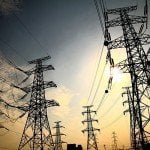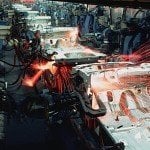The drain-water heat recovery (DWHR) business could get a boost in Ontario, now that the building code for Ontario includes the devices in its list of allowable energy-saving items. Ontario is the first jurisdiction in North America to recognize DWHR.

DWHR is a relatively simple way to recover the energy that is lost when hot water goes down the drain. The energy lost when a person takes a hot shower is estimated at 80–90 per cent. Since water heating accounts for 20 per cent of the average home energy consumption, and showering accounts for between 50 and 70 per cent of household hot water use, proponents of DWHR have long argued that it makes good sense to recover some of that energy. The heat that you recover reduces the amount of energy you have to pay for to create new heat. It should be made clear that the system does not recycle the hot water for reuse in the home. Instead, the recovery unit works by heat exchange, and is attached to the drain pipe. As used hot water passes through the drain pipe, its heat is collected by the recovery unit and transferred to the pipe carrying cold water into the water heater. This pre-heating of the water entering the water heater means that the heater has less work to do. Some claim that it can save as much as 40 per cent on water heating costs. And there is evidence that it extends the life of the water heater, since it won’t be on as much. An Ontario manufacturer of the devices under the name Power-Pipe says that he currently sells to both the new construction market and the do-it-yourself market, the latter through Home Depot and Sears. The changes to the Ontario building code could mean a lot more demand for the Power-Pipe. Drain water heat recovery devices are simple, with no moving parts that can fail, so they are virtually maintenance free. And they are said to pay for themselves in two to five years, depending on how much you spend on one, and how much you save on your energy bill. The greatest savings are realized the more hot water is used, which generally means showers. Other hot water use typically does not generate enough heat to be efficiently recovered by the units. Typical savings, based on a family of four, each taking a ten-minute shower every day, look like this (from ecoliving): Natural gas water heater + DWHR Annual cost savings: $85 to $139 Oil water heater + DWHR Annual cost savings: $133 to $217 Electric water heater + DWHR Annual cost savings: $171 to $278 Reprinted with permission of Condo.ca

































